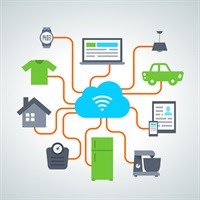
In this environment, retailers with significant physical presence need new ways to re-build in-store loyalty. Part of the success of building loyalty online comes from the ability to gather data around customers' online shopping behaviours. From looking at their purchases, to knowing what they looked at but did not purchase and then using it to deliver personalised messages and offers. This kind of customer centricity creates more loyal customers that ultimately spend more, since they are being offered products and services that actually interest them.
Indoor positioning systems such as iBeacons can be used to detect and infer a customers' browsing behaviour in a similar way to cookies online. iBeacons are low-cost Bluetooth based transmitters for indoor positioning systems that can use nearby mobile devices to inform the retailer of the presence of the mobile device, and hence the shopper holding it.
Another aspect of online retail, which the IoT is bringing back to a physical experience, is the possibility of cross channel in-store engagement. Push messages can be triggered when a customer enters a shop, giving them the option to log into a store app, or third party tools like Facebook. Smart retailers today are creating apps, which encourage in-store engagement, sending alerts to customers with maps, special offers and more
RFID tags allow retailers to monitor clothing as it arrives in store, keep a track of exactly where an item is located, and have real-time visibility over inventory levels from any connected device or cloud platform. This means that shop-floor staff can have this information readily available in real time. Combining real-time tracking of inventory with the ability to communicate seamlessly with back-of-store staff means that floor staff have more time than ever to interact with customers: engaging, upselling, and adding value.
The Internet of Things is also revolutionising life for in-store staff. The introduction of smart devices onto the shop floor has already been touted as a way to improve in-store customer service. In connecting these devices to tracking technology through the IoT, staff now has the ultimate tool for customer service. If a customer has a question which requires specialist knowledge, staff can easily find an expert, see whether they are occupied, then call them to the customer at the touch of a button. This means less wasted time for staff, and exceptional service for customers.
The industry benefits are clear: nearly 96% of the retail industry has already started to make the necessary changes to implement IoT solutions in their businesses, and 67% have already begun deploying IoT technology.
For more information, go to www.zebra.com/onestore